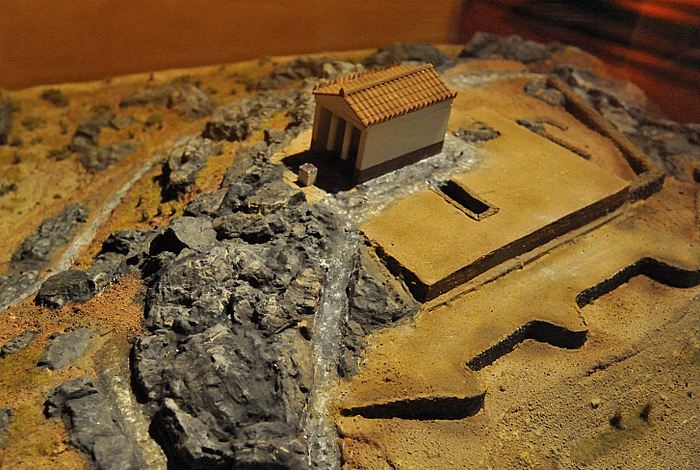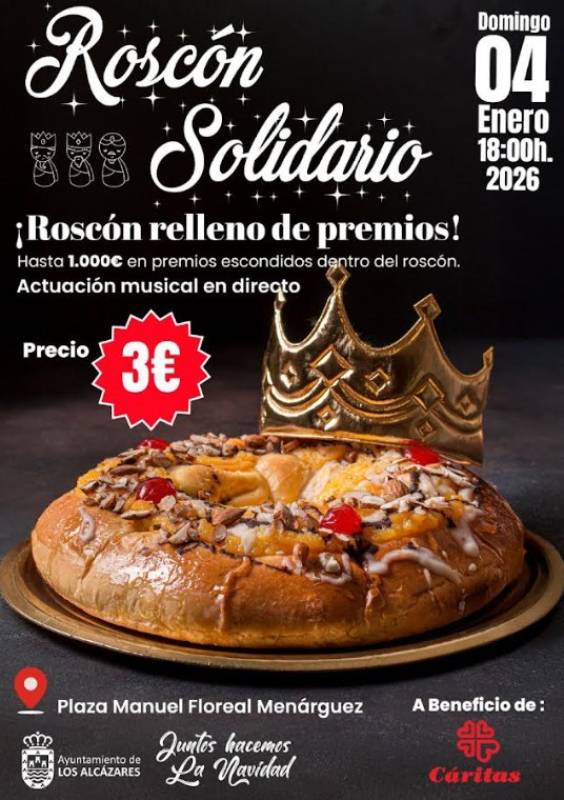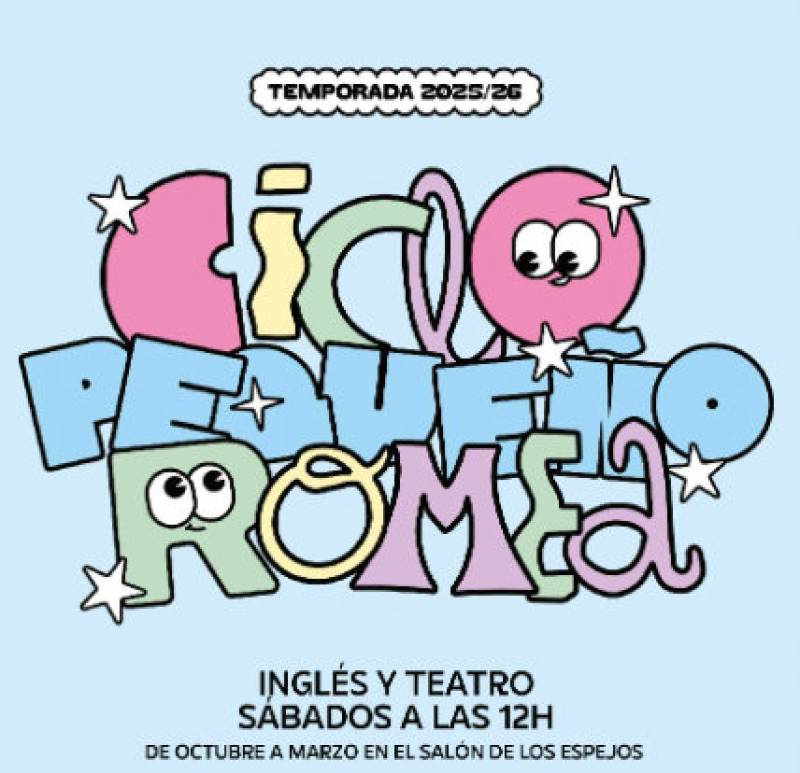
To be listed on the haciendadelalamo TODAY MAP please call +34 968 018 268.
Centro de Visitantes La Luz Murcia
The Visitor centre of La Luz is on the outskirts of the city of Murcia in the Carrascoy and El Valle regional park
The visitor centre of La Luz is located in the Carrascoy y El Valle natural park, 7 kilometres outside the capital city and contains an interesting exhibition relating to the Iberian culture which occupied this strategic site overlooking the river valley below, prior to the birth of Christ.
The park area is popular with Murcians escaping the heat of the capital and is a pleasant place to walk or enjoy the outdoors, with many woodland paths reaching out into the shaded pine forests along with restaurant and cafetería facilities.
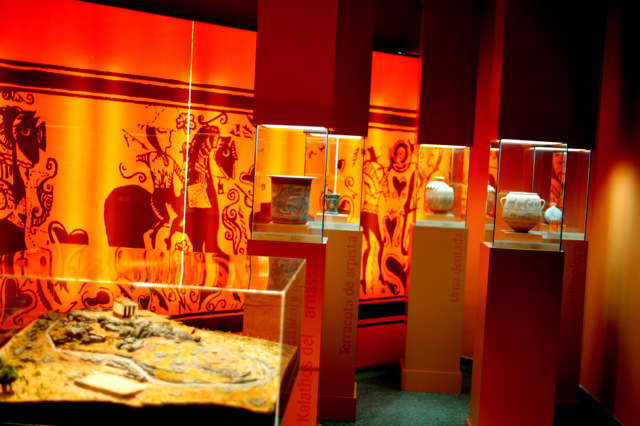
But it´s also a location with deep religious significance and is known to have been a focal point for cult worship for over 2500 years: this visitor centre is built next to the remains of a former Iberian sanctuary which serviced a sizeable community living along the forested face of what is now the regional park of Carrascoy and El Valle and on the site of the modern settlements which fringe this hillside.
The visitor centre itself hosts a permanent exhibition explaining the significance of the remains excavated at the site and externally visitors can walk up to the location of the religious complex to see the remains which are on show to the public. There´s not a vast amount to see, but this is deceptive, giving little indication of just how important this site was when it was in operation and its significance in archaeological terms.
It’s well worth taking a drive up into the woods to visit the centre as part of a combined morning out at the sanctuary of La Fuensanta, the hermitage of La Luz and a meal out in one of the restaurants in this area or just a walk in the woods. There is a large restaurant above the visitor centre with superb views over the surrounding countryside and another further down the hill by the Sanctuary of La Fuensanta. On the way up, stop off and buy some chocolate from the monks in the hermitage of La Luz.
Below is a brief summary of the importance of this site and there is also an extensive text which details who the Iberians were, what their culture comprised and the ròle they played in the history of the region of Murcia.
To see this report, click The Iberians in the Region of Murcia.
Opening hours of the Centro de Visitantes La Luz: 10am to 7pm
Exhibition area open from Tuesday to Sunday 10am to 2pm and 4pm to 7pm.
Centro de Visitantes La Luz
Carretera El Valle
30151
Santo Angel Murcia
968 379 772: For enquiries or to arrange guided visits for groups ( English is spoken)
Orientate: Aim for the Sanctuary of La Fuensanta, and then drive past the sanctuary up into the hills behind, following the signs around to the right. Youll see the Hermitage of La Luz on the right hand side and then almost immediately after it, the sanctuary of La Luz
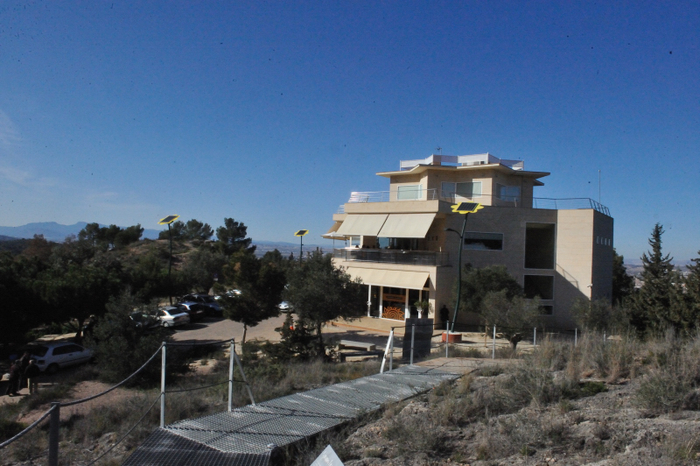
Iberian Sanctuary of La Luz Murcia
Spain is often referred to as the Iberian Peninsula, the name coming from a dynamic culture which occupied an area encompassing modern day Andalucía, Albacete, Murcia, Valencia, Catalunya and some parts of Aragón between the 6th and the 1st century BC: the Iberians.
In the Region of Murcia, the Iberian population left its mark in various settlements, burial grounds and sanctuaries, the largest known settlements in Mula (El Cigarralejo), Verdolay (near Murcia, including the burial ground of Cabecico del Tesoro, the settlement of Santa Catalina del Monte, and the sanctuary of La Luz), Jumilla (in La Senda and Coimbra del Barranco Ancho) and Los Nietos, near Cartagena, where there are a settlement and a burial ground close to each other at La Loma del Escorial.
Although significant evidence of a system of worship has been found in the various sites, little is known about the actual beliefs and rituals of the Iberians’ religion, and there is no proof of a calendar cycle of worship, but it is known that Iberian worship was irrevocably linked to the natural surroundings in which these people lived, Greek and Roman historians mentioning a religion based on nature, fertility and celestial bodies. Evidence has been found to indicate that members of the society played a primary role in worship, as priests do today, but priests were almost certainly not a separate caste, and nothing is known of their exact roles.
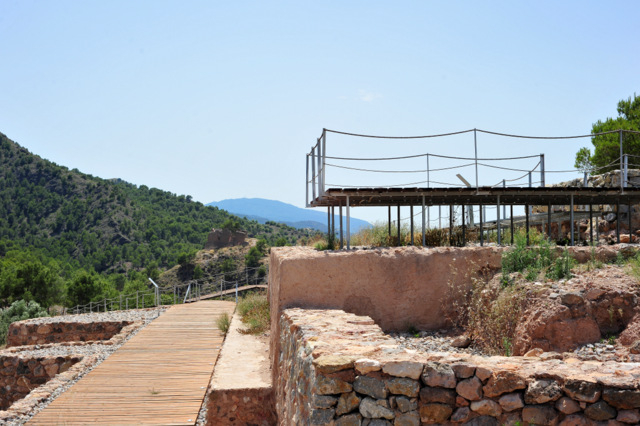
The choice of worship site always seems to focus on a natural feature, and these vary considerably in the sites excavated, from hilltops to caves, springs, water or woods, and were simple affairs where offerings were left.
In some places the presence of broken shards of ceramic indicate a gift of wine, in others the gifts are more substantial in the form of ex-votos, which can take the form of ceramic or even bronze figures and depictions of animals and human figures.
The exceptions to this rule date from the last three centuries BC when the Iberians were exposed to external trading cultures such as the Greeks and Phoenicians, when more substantial monuments were erected in these sacred places, making them into a local version of the temples commonly found in other Mediterranean nations.
An example of this is the Santuario de la Luz.
This hilltop was a place of worship from the 5th to the 1st century BC, and serviced the settlement of Santa Catalina and the burial ground nearby at Cabecico del Tesoro, the whole complex referred to collectively as El Verdolay.
This format of three distinct elements is a common feature found in Iberian settlements and the discovery of one normally indicates the nearby presence of the other two.
In this case modern development covers much of the residential areas used by the former Iberian people who lived here, but in other areas such as Mula, the El Cigarralejo burial ground yielded an astonishing collection of important archaeological material, some of which can be seen in the El Cigarralejo museum in the town.
The Iberian culture flourished at the end of the Bronze Age, a period when improved technology enabled a static population to produce larger volumes of food, due to their ability to make metal tools, and was a complex culture with highly developed social structures.
A beliefs system clearly involved a ritual burial in defined burial grounds, normally near the main communications routes close to settlements.
The exact manner of burial depended on the status of the deceased, although typically the body was cremated, either on a pyre or in the grave itself, together with personal possessions, clothes and in the case of warriors, weapons. Remains of the cremated body were then placed in a grave, sometimes directly into the ground and sometimes in a ceramic urn, which was then in turn interred or covered with pieces of masonry or stone.
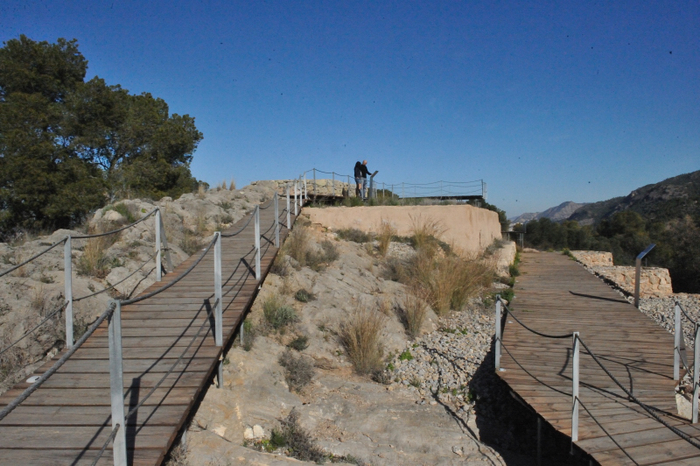
The archaeological complex at El Verdolay
The first known human inhabitants of what is now the municipality of Murcia settled on raised ground which was easy to defend and safe from the floods of the rivers Segura and Guadalentín. The hillsides near La Alberca were home to the first settlers, who were undoubtedly attracted by the strategic advantage of the area, the availability of plentiful fresh water and metallic ores. The Argaric culture, which flourished between 2200BC and 1550BC left evidence of their presence in La Alberca and Beniaján, the most important site being at “Puntarrón Chico” at an altitude of 253 metres, where burials were found beneath the floor of their residential dwellings, a common characteristic of Argaric sites. ( Those with an interest in understanding the sequence of prehistory may find it useful to read about the Argarics or the information about La Bastida, a substantial Argaric site in Totana which can be visited at weekends.)
Objects found at the site suggest that it was inhabited continuously with extensive Iberian settlements between the 5th and 1st centuries BC. By this point the Romans had occupied the area and a gradual process of Romanization took place, the Iberians absorbing customs, beliefs and practices to eventually disappear as a definable culture. The security of Roman protection meant that inhabitants could leave their strategically advantageous sites on the hillside and move down closer to their agricultural farms on the valley floor below, building Roman-style villas.
The hillside structures were abandoned and no activity took place in this location until the 9th century when the next wave of invaders, the Moors, built a castle on the Monte de Santa Catalina, remains of which can still be seen today.
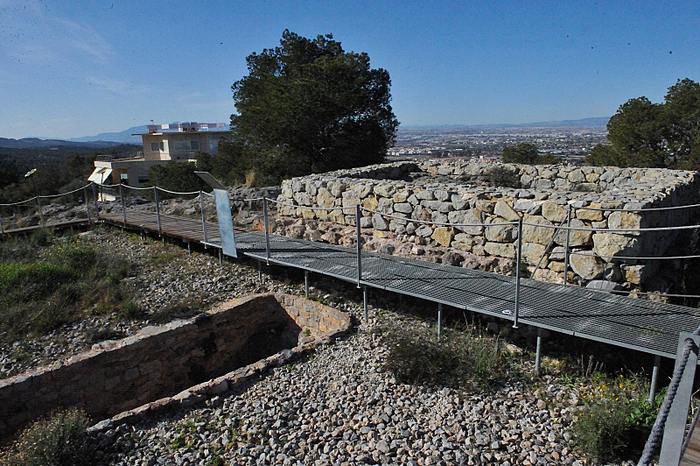
The Sanctuary of La Luz
As is typical of Iberian sites, the main living areas of this Iberian complex were on the Monte de Santa Catalina, while the places of worship were on the Cerro de la Luz and the hillsides near San Antonio el Pobre, with burial grounds on the Cabecico del Tesoro and the lower slopes.
The first sanctuary would have been a simple affair, and there is evidence that the first sanctuary was a small cave which was infilled to build the main structure, but as the Iberian culture itself was exposed to the influences of religious and cultural practices of other areas of the Mediterranean a larger and more imposing structure resembling a temple was built later on.
In the Santuario de la Luz numerous votive offerings have been found, together with an image in marble limestone of the goddess to whom the temple was dedicated, Demeter, the goddess of life, fecundity and harvest.
Excavation work at the site was carried out by Doctor Mergelina Luna in 1924 and 1925 and unearthed many Iberian offerings (exvotos) which can be seen at the municipal archaeological museum in Murcia, along with the head of the goddess found at the site. It appears that this had been deliberately damaged after the sanctuary was abandoned as it bore clear marks of intentional damage made by metallic objects.
The site is next to the visitor centre, which has a number of exhibits explaining the structure of the area, and showing how the site would have appeared during its heyday. There are reproductions of Iberian artifacts and an excellent large scale model of the area to help visitors orientate and see the different parts of the regional park. It’s an interesting exhibition with panels in English.
Outside, visitors can walk up wooden ramps to the site of the former sanctuary. The modern-day ramps replace the liturgical walkway or dromos, which would have carried visitors up to the heart of the complex.
At the foot of the structure is the Odeon, or preparatory space in which processions began, where dances or theatrical acts would have taken place prior to the climb, with clear evidence of stone benches or seats still visible in the rock. Climbing up there are still niches in which offerings would have been left, liquids poured, substances burnt or even animals sacrificed as part of the ritual, and a deep bath in which purification rituals were likely to have taken place.
Finally at the top visitors reach the location of the sanctuary, which measured 6.5 by 4.5 metres, and would have contained a principal altar to the goddess, where offerings were made for good harvests, fertility or as thanks for perceived favours granted.
Although there’s not a great deal to see, the views are fabulous and a visit to the centre is an interesting focus for a morning out, and can be combined with a meal, a walk and a visit to the sanctuary of La Fuensanta.
